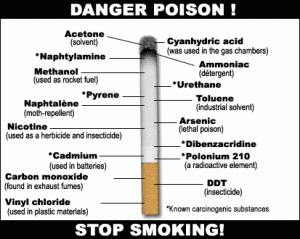Activating or deactivating a gene or multiple genes in enzymatic cascade reactions involves gene products (Chock, Rhee, & Stadtman, 1980). There are several genes that cause breast cancer, and according to the Breast Cancer Gene Database (BCGD), 350 tumor genes of these genes are known (Baasiri, Glasser, Steffen, & Wheeler, 1999). Therefore, it is critical to have an in depth understanding of the association and biological interaction a chemical agent or multiple agents (environmental or extrinsic factors) effects on gene functions (intrinsic factor). Environmental/extrinsic factor’s relative risk to breast cancer development is crucial in the product development pipeline, and for advancing accurate health-risk assessments/information to the public, for societal well-being.
Scientists discovered recently that p53 gene, which usually causes prostate cancer, is associated in some breast cancer onset; this finding shows that patients with familial mutation in p53 had more incidence of breast cancer (Baasiri, Glasser, Steffen, & Wheeler, 1999). In 1995, The National Cancer Institute indicated that there is no prevention for breast cancer, and suggested that early detection is the key for a palliative measure or probable cure for the disease (Shellman, S. 2012). Fifty years ago, breast cancer risk is 1 in 20 women (5%). Currently, the risk is 1 in 8 women (12.5%), and the risk is increasing each year by 1% (Shellman, 2012). The simple but complex issue this generation faces, is that even with advances in medical technologies and treatments for breast cancer, breast cancer, is increasing in a significant rate.
Thirty years ago, scientists predicated that breast cancer will increase significantly due to synthetic chemicals. From 1940’s to 1980’s, production in synthetic chemicals has increased by a factor of 350 (Shellman, 2012). In addition, known carcinogenic chemical were identified in plastics, pesticides, herbicides, dairy products including milk, toxic wastes and breathable environmental air (Shellman, 2012). Among the 75000 toxic chemicals produced, only 3% is tested for safety, and study has shown that women that live near toxic wastes have 6.5 times more incident of breast cancer (Shellman, 2012).
In Israel, pesticides found in dairy products were shown to increase breast cancer by 12%, and in 1986, Israeli government banned the use of Benzene hexachloride, DDT, and Lindane (Shellman, S. 2012). Scientists indicated that due to the ban of toxic products in Israel, breast cancer mortality which has been increasing every 25 years in Israel, dropped to 8% for all age groups (Shellman, 2012).
 In America, AstraZeneca is a strong advocate for breast cancer awareness. In addition, the company manufactures Tamoxifen (Nolvadex) which brings in a revenue of about $500 million yearly. On the other hand, the company also produces organochlorine pesticides and acetochlor, which were known to be a breast cancer causing agent. Moreover, its chemical plant releases about 53,000 pounds of carcinogen into the air (Shellman, 2012). To add salt to injury, in 1999, Duke University Medical Center indicated that prolonged use of Tamoxifen increases a rare but invasive form of breast cancer (Hitti, 2009). Following this finding, in 2000 the National Institute for Environmental Health Services added Tamoxifen in their list as a carcinogenic chemical. Also, Tamoxifen is known to cause uterine, liver, gastro-intestinal cancer, and the chemical has a known adverse effect which includes stroke, blood clot, eye damage, depression and menopausal symptoms (Shellman, 2012).
In America, AstraZeneca is a strong advocate for breast cancer awareness. In addition, the company manufactures Tamoxifen (Nolvadex) which brings in a revenue of about $500 million yearly. On the other hand, the company also produces organochlorine pesticides and acetochlor, which were known to be a breast cancer causing agent. Moreover, its chemical plant releases about 53,000 pounds of carcinogen into the air (Shellman, 2012). To add salt to injury, in 1999, Duke University Medical Center indicated that prolonged use of Tamoxifen increases a rare but invasive form of breast cancer (Hitti, 2009). Following this finding, in 2000 the National Institute for Environmental Health Services added Tamoxifen in their list as a carcinogenic chemical. Also, Tamoxifen is known to cause uterine, liver, gastro-intestinal cancer, and the chemical has a known adverse effect which includes stroke, blood clot, eye damage, depression and menopausal symptoms (Shellman, 2012).
About 1% of women in the USA have cancer mutation genes, which increases their risk to breast cancer fourfold upon exposure to radiation. In addition, mammogram radiation has about 5-15% false positive error margin and has shown to cause breast cancer upon repeated exposure, and also can increase the risk of cancer metastasis (Shellman, 2012). On the other hand, infrared thermography is a non-radiation cancer detector. Although the technology has not been proven to be highly accurate, it is safe in terms of non-carcinogenic effect.
Most women identify their breast cancer while taking a shower. However, self-examination is not a proactive measure to prevent breast cancer onset (Porep, 2002). Also, self-exam does not necessarily mean that other tests are not relevant because minimal exposure to radiation is important in detecting and preventing an aggressive form of cancer (Porep, 2002). Thus, with a thorough knowledge of breast cancer causes and effects, and actionable realization of known facts, robust breast cancer prevention measures and therapy advancements can be realized sooner.
References:
Baasiri, R., Glasser, S., Steffen, D. & Wheeler, D. (1999). The Breast Cancer Gene Database: a collaborative information resource. Nature, 18(56), 7958-7965. Retrieved from http://www.nature.com/onc/journal/v18/n56/full/1203335a.html.
Chock, P., Rhee, S., & Stadtman, E. (1980). Interconvertible Enzyme Cascades in Cellular Regulation. Annual Review of Biochemistry, 49, 813-841. DOI: 10.1146/annurev.bi.49.070180.004121. Retrieved from http://www.annualreviews.org/doi/abs/10.1146/annurev.bi.49.070180.004121.
Hitti, M. (2009).Tamoxifen: Risk of Rare Second Breast Cancer? Retrieved from http://www.webmd.com/breast-cancer/news/20090825/tamoxifen-rare-second-breast-cancer-risk.
Porep. D, (2002). Do you need regular mammograms? SafetyIssues, 1(4). Retrieved from http://www.safetyissues.com/magazine/2002/3/mammogram/mammogram.htm

Comments are closed.